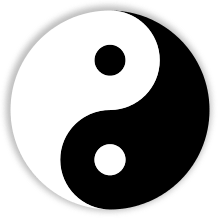Zhang Daoling
| Zhang Daoling | |
|---|---|
 Zhang Daoling as pictured in Myths and Legends of China by E. T. C. Werner | |
| Born | 34 |
| Died | 156 (aged 121–122) |
| Occupation | Founder of Way of the Five Pecks of Rice |
Zhang Ling (simplified Chinese: 张陵; traditional Chinese: 張陵; pinyin: Zhāng Líng; Wade–Giles: Chang Ling; 34–156), courtesy name Fuhan (simplified Chinese: 辅汉; traditional Chinese: 輔漢), was an Eastern Han Dynasty Taoist figure credited with founding the Way of the Celestial Masters sect of Taoism, which is also known as the Way of the Five Pecks of Rice.[1]
He is also known as Zhang Daoling (simplified Chinese: 张道陵; traditional Chinese: 張道陵; pinyin: Zhāng Dàolíng; Wade–Giles: Chang Tao-ling), Celestial Master Zhang (張天師, Zhāng tiānshī), Ancestral Celestial Master (祖天師, Zǔtiānshī) or Zhengyi Zhenren (正一真人) to Taoists. Zhang is sometimes pictured riding on a tiger. In some Taoist sects, Zhang, along with Ge Xuan, Xu Xun (许逊) and Sa Shoujian (萨守坚), are called the "Four Celestial Masters" (四大天師).
Biography
| Part of a series on |
| Taoism |
|---|
 |
|
Deities |
|
Holy places |
|
Organisations |
| Portal Taoism |
The details of the life of the historical figure Zhang Ling are obscure; most of the information about him comes from later scripture and hagiography. According to these, Zhang traced his ancestral home to Feng County, Jiangsu, and was said to be a descendant of Zhang Liang. He was born in the tenth year of the Jianwu era during the reign of Emperor Guangwu of Han. He started reading the Tao Te Ching at a young age and studied in the Taixue (Imperial Academy) before. He served as a magistrate in Jiangzhou, Ba Commandery (present-day Chongqing) during the reign of Emperor Ming of Han.
Zhang later retired and led a reclusive life at Mount Beimang, where he practiced taoist methods of achieving longevity. When invited to serve as a boshi (equivalent of a present-day professor) in the Imperial Academy, he claimed that he was ill. Emperor He of Han summoned him thrice to serve as the Taifu (Imperial Tutor) but he refused again.
According to hagiographies compiled in approximately 400 C.E., in 142 C.E. the deity Taishang Laojun (a deified Laozi) revealed to Zhang on Mount Heming the "Doctrine of the Orthodox One [Resting On] the Authority of the Alliance" (pinyin: zhengyi mengwei dao), and bestowed upon him the title Celestial Master.[2][3] The deity warned that plagues, beasts, and the demons of the Three Offices and Six Heavens of the underworld were due to be released upon humankind, and that only 240,000 people would be chosen as survivors and "seed people" (pinyin: zhongmin) to populate the new age, the era of Great Peace.[4]
Zhang then endeavored to reform supposedly degenerate religious practices. After gathering numerous followers, he started a health cult that advocated certain longevity practices (recorded in books which have been lost) and founded a theocratic state in Sichuan organized into 24 parishes (later 28), which outsiders called the Way of Five Pecks of Rice after a tax of that amount levied on followers.[5] A major change instituted by the new Covenant was the rejection of food and animal sacrifices. Also, the teachings of Laozi as transmitted by Zhang included the first true Taoist religious pantheon as distinguished from the prior ancient religion of China. The Xiang'er, a commentary on the Tao Te Ching preserved today in a sixth-century manuscript, is traditionally ascribed to Zhang Daoling's authorship and even if not his work may reflect his teachings.[6]
Zhang is said to have died on Mount Qingcheng in 156 during the reign of Emperor Huan of Han at the age of 123. However, it is also said that Zhang did not die but learned the arcana of Taoism to ascend in broad daylight (Xiandao). Instead, his body became like luminous ether, disappearing from eyesight and became an immortal.
Descendants
His descendants have held the title of Celestial Masters up to the present day. They also held the title of 正一嗣教眞人.[7][8][9]
See also
Notes
- ↑ https://libcom.org/library/ancient-utopia-peasant-revolts-china-ngo-van-xuyet
- ↑ Jones, Lindsay. "Zhang Daoling." Encyclopedia of Religion. 2nd ed. Detroit: Macmillan Reference USA, 2005. p. 9954.
- ↑ Greg Woolf (2007). Ancient civilizations: the illustrated guide to belief, mythology, and art. Barnes & Noble. p. 218. ISBN 978-1-4351-0121-0.
- ↑ Kohn, Livia. Daoism Handbook. Leiden: Brill, 2000. pp. 264–266.
- ↑ Robinet, Isabelle. "Zhang Daoling." in Jones, Lindsay ed. Encyclopedia of Religion. 2nd ed. Detroit: Macmillan Reference USA, 2005. p. 9954.
- ↑ Bokenkamp, Stephen R.Early Daoist Scriptures. Berkeley: University of California Press, 1997. pp.29-148. (includes full, annotated translation of the text)
- ↑ H.S. Brunnert; V.V. Hagelstrom (15 April 2013). Present Day Political Organization of China. Routledge. pp. 494–. ISBN 978-1-135-79795-9.
- ↑ "Archived copy". Archived from the original on April 25, 2016. Retrieved April 17, 2016.
- ↑ https://archive.org/stream/presentdaypoliti00brun#page/494/mode/2up